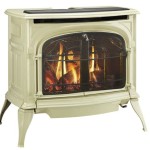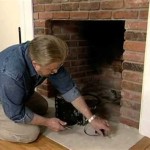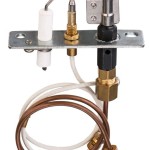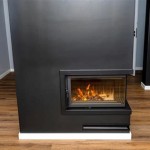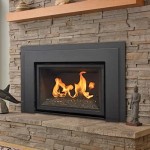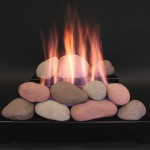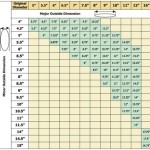How To Clean A Gas Fireplace Flue
Maintaining a gas fireplace is crucial for its safe and efficient operation. While gas fireplaces are generally cleaner than wood-burning fireplaces, the flue, also known as the chimney vent, can still accumulate debris over time. This build-up can hinder proper ventilation, potentially leading to carbon monoxide build-up inside the home, a serious health hazard. Regular cleaning of the gas fireplace flue is essential to prevent such dangers and ensure the longevity of the appliance.
The flue’s primary function is to vent combustion byproducts, including carbon dioxide and water vapor, away from the living space. Incomplete combustion, often caused by a poorly maintained fireplace or blocked flue, can produce carbon monoxide, an odorless and colorless gas. Exposure to even low levels of carbon monoxide can cause flu-like symptoms, while higher concentrations can be fatal. Additionally, a blocked flue can cause the fireplace to operate inefficiently, wasting fuel and increasing energy costs.
Therefore, understanding the necessity and proper procedures for cleaning a gas fireplace flue is important for every homeowner with such an appliance. This article provides a comprehensive guide on how to safely and effectively clean a gas fireplace flue, outlining the tools required, the steps involved, and important safety precautions to observe.
Determining the Need for Cleaning
Identifying when a gas fireplace flue needs cleaning is the first step. Unlike wood-burning fireplaces where soot buildup is readily apparent, gas fireplace flue issues are sometimes more subtle. Regular inspection is the key. Here are some signs that indicate a need for cleaning:
Visible Debris: Check the top of the chimney for any signs of bird nests, leaves, or other debris. While gas appliances burn cleaner, animals and environmental factors can still introduce foreign objects into the flue.
Unusual Odors: A distinct, unusual odor emanating from the fireplace when it's in use could indicate a blockage preventing proper ventilation. This is especially concerning if the odor is pungent or reminiscent of exhaust fumes.
Flame Irregularities: Observe the flame pattern. A healthy gas fireplace flame should be a consistent blue color. Yellow or orange flickering flames can indicate incomplete combustion, which might be caused by a clogged flue.
Carbon Monoxide Detector Activation: If a carbon monoxide detector triggers an alarm, immediately evacuate the premises and contact the fire department or a qualified HVAC technician. This is a serious emergency.
Annual Inspection Recommendations: Most fireplace manufacturers and HVAC professionals recommend an annual inspection of the gas fireplace and flue, regardless of apparent issues. This preventative measure can identify potential problems before they become safety hazards.
Tools and Materials Required
Having the correct tools and materials is crucial for a safe and effective cleaning process. Attempting to clean a gas fireplace flue without the proper equipment can lead to damage to the fireplace, injury, or an incomplete cleaning job. The following list outlines the essential items:
Chimney Sweep Brush: This is the primary tool for scrubbing the flue walls. Choose a brush with sturdy bristles made of wire or plastic, selecting the appropriate size for the flue’s diameter. Measure the flue's inner diameter before purchasing a brush to ensure a proper fit. Too small of a brush will not effectively clean, while too large of a brush could become lodged in the flue.
Extension Rods: These rods connect to the chimney sweep brush and allow you to reach the entire length of the flue. Purchase a sufficient number of rods to cover the total height of the chimney.
Drop Cloths or Plastic Sheeting: Protect the surrounding area from dust and debris. Cover the fireplace opening and any nearby furniture.
Shop Vacuum with HEPA Filter: A shop vacuum is essential for removing the dislodged debris. A HEPA filter prevents fine particles from being released back into the air.
Gloves and Eye Protection: Protect your hands and eyes from dust, soot, and potential irritants. Wear heavy-duty work gloves and safety glasses or goggles.
Dust Mask or Respirator: This is crucial for preventing the inhalation of fine particulates. Choose a dust mask rated N95 or higher, or a respirator for more comprehensive protection.
Flashlight or Headlamp: Adequate lighting is necessary to inspect the flue and ensure thorough cleaning.
Screwdriver or Wrench: Depending on the fireplace model, you may need these tools to remove the gas logs or access panels.
Step-by-Step Cleaning Procedure
Once you have gathered the necessary tools and materials, you can begin the cleaning process. It’s imperative to follow these steps carefully to ensure the safety and effectiveness of the cleaning.
Preparation: Turn off the gas supply to the fireplace. Locate the gas shut-off valve, usually near the fireplace or in the basement. Turn the valve to the "off" position. Allow the fireplace to cool completely before proceeding.
Protect the Area: Lay down drop cloths or plastic sheeting to protect the surrounding floor and furniture from dust and debris. Seal off the fireplace opening with plastic and tape to prevent dust from escaping into the room. Make a small opening in the plastic to insert the vacuum hose.
Remove Components: Carefully remove the gas logs and any other removable components inside the firebox. Refer to the manufacturer's instructions for specific removal procedures. Clean the logs with a soft brush or vacuum to remove any dust or debris.
Access the Flue: Locate the access point to the flue. This is typically at the top of the chimney. If you are uncomfortable working on the roof, consider hiring a professional chimney sweep. Otherwise, carefully climb onto the roof, following all safety precautions. Use a ladder that is stable and reaches at least three feet above the roofline. Wear appropriate footwear and use a safety harness if necessary.
Start Brushing: Attach the chimney sweep brush to the first extension rod. Insert the brush into the flue opening. Begin scrubbing the flue walls with an up-and-down motion. Add additional extension rods as needed to reach the entire length of the flue. Apply consistent pressure while scrubbing to dislodge any accumulated debris.
Vacuum the Debris: After brushing, remove the brush and rods. Carefully vacuum the flue from the top using the shop vacuum with a HEPA filter. Insert the vacuum hose into the flue and thoroughly vacuum the walls to remove any remaining debris. Seal the opening around the vacuum hose to maximize suction and prevent dust from escaping.
Clean the Firebox: Remove the plastic sheeting from the fireplace opening. Use the shop vacuum to clean the firebox, removing any debris that has fallen during the flue cleaning process. Wipe down the interior surfaces with a damp cloth.
Reassemble the Fireplace: Replace the gas logs and any other removable components according to the manufacturer's instructions. Ensure they are properly positioned and securely in place.
Inspect and Test: After reassembly, inspect the fireplace for any damage or loose connections. Turn the gas supply back on. Light the fireplace and observe the flame pattern. It should be a consistent blue color. Check for any unusual odors or smoke. If you notice any problems, turn off the gas supply and contact a qualified HVAC technician.
Dispose of Debris: Properly dispose of the collected debris in a sealed bag. Clean the drop cloths or plastic sheeting and store them for future use. Wash your gloves and clean your eye protection and respirator.
By following these steps and taking the appropriate safety precautions, homeowners can effectively clean their gas fireplace flue and ensure the safe and efficient operation of their appliance. Regular cleaning and maintenance are essential for preventing carbon monoxide build-up and prolonging the life of the gas fireplace.

How To Care For Your Fireplace Gas Fireplaces Chimney Cleaning

How To Clean A Gas Fireplace The Proper Way

Do Gas Fireplace Chimneys Need Cleaning Fresh Air

How To Clean A Gas Fireplace 11 Steps With S Wikihow

How To Clean A Chimney The Home Depot

Do Gas Fireplace Chimneys Need Cleaning Fresh Air

Clean And Inspect Your Chimney To Remove Sooty Deposits

The Ultimate Guide To Cleaning Your Gas Fireplace R T Services

Ventless Gas Fireplace Maintenance Guide Fireplaces Direct Learning Center

What You Should Know About Gas Fireplace Maintenance
Related Posts


